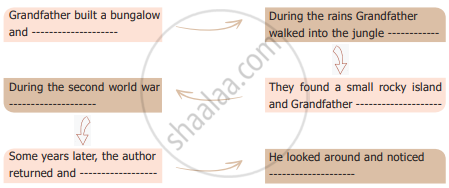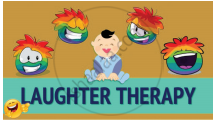Advertisements
Advertisements
प्रश्न
Do you know of any incident when someone has been brought back to life from the brink of death through medical help. Discuss medical procedures such as organ transplant and organ regeneration that are used to save human life.
उत्तर
Medical science has taken a long stride. Advancement in surgery has brought a revolution in the lives of human beings. People have been brought back to life from the jaws of death through prompt medical help. Organ transplantation and organ regeneration are some of the new medical procedures. They are frequently used to save human lives.
Instances of kidney transplantation are quite common.
I remember one incident where a kidney transplantation saved a human life. There was an appeal from a kidney patient in all the leading newspapers. Both of his kidneys had failed. Prompt transplantation of a healthy kidney could save his life. At last, the man found a donor. The operation was successful. The organ transplantation brought him back to life from the brink of death.
APPEARS IN
संबंधित प्रश्न
B1. Complete the following statements:
(i) The poet is talking about............................. .
(ii) As a nation weare missing our .................................... .
(iii) Old people havekeys ........................... .
(iv) The elderly remember .......................... .
"Oh the value of the elderly! How could anyone not know? They hold so many keys, so many
things they can show.
We all will read the other side this I firmly believe.
And the elderly are closest oh what clues we could retrieve.
For their characters are closest to how we'll be on high.
They are the ones most developed, you can see it if you try.
They've let go of the frivolous and kept things that are dear.
The memories of so sweet, of loved ones that were near.
As a nation we are missing our greatest true resource,
To get to know our elders and let them guide our course."
B2 Express
State what the underlined words mean:
(i) Oh the value of the elderly! State the value ............. .
(ii) They are the ones most developed. 'They' stand for ............. .
B3: Match the words in Column A with their rhyming word in Column B:
| Column A | Column B |
| (i) Course | (a) Show |
| (ii) Believe | (b) resource |
| - | (c) retrieve |
Answer any four of the following in 30 – 40 words each:
(a) How did his experience at the YMCA swimming pool affect Douglas?
(b) What hospitality did the peddler receive from the crofter?
(c) Aunt Jennifer;s efforts to get rid of her fear proved to be futile. Comment.
(d) What does Stephen Spender want to be done for the children of the school in a slum?
(e) What kind of life was enjoyed by crown prince Jung Bahadur till he reached the age of twenty?
(f) Where, when and how did Dr. Sadao meet Hana?
Answer the following question in 200-250 words:
"The best and most beautiful things in the world can't be seen or even touched. They must be felt with the heart." Justify the famous quote of Helen Keller.
Notice the kind of English Tsetan uses while talking to the author. How do you think he picked it up?
How do Shahid and the writer react to the knowledge that Shahid is going to die?
How do you respond to these lines?
Light, chill and yellow,
Bathes the serene
Foreheads of houses
Discuss in pairs
Choice of diction is very crucial to the communication of meaning.
Read the extract 'Being Neighborly' and complete the following statement:
Jo swept a path around the garden for ________________.
Sue and Johnsy were very close friends.
Correct the following statement.
The last leaf was a real leaf that survived.
Read the descriptions of the following from the story and describe any one of them using your own words.
- The ivy vine
- Behrman
- The last leaf that Johnsy saw
Discuss in groups and share with one another.
The daily routine of your mother and father on working days.
Imagine you are Malti. Write about any one event in the story from Malti’s point of view.
Guess the meaning of the following word.
barefoot
Guess the meaning of the following word.
pounced
What difficulties do the people in the play face in the morning?
Discuss the following in group.
Do’s and Don’ts for young children.
Is the bird a crow?
when to fight for a righteous cause
one did gain considerable applause.
When will one get an applause?
Why was the elephant owner happy with the deal?
Read the story on your own. Discuss in a group and complete the story map below.
| A story map is the main events of the story given in a flow chart. |

Which place was the last stand of the Indian army?
Jaswant was helped by __________ tribal girls.
What are the three parts of a robot
Match the following.
| 1. | Pablo | Inspector |
| 2. | Velayudham | old man |
| 3. | Sreejith | dog |
Who showed love and care to the children?
Why did the child in the poem like looking at the pictures?
What did the carpenter buy?
Now, read the following passage on “Laughter Therapy” and answer the questions that follow.

- Laughing is an excellent way to reduce stress in our lives; it can help you to cope with and survive a stressful life. Laughter provides full-scale support for your muscles and unleashes a rush of stress-busting endorphins. Since our bodies cannot distinguish between real and fake laughter, anything that makes you giggle will have a positive impact.
- Laughter Therapy aims to get people laughing, in groups and individual sessions and can help reduce stress, make people and employees happier and more committed, as well as improve their interpersonal skills. This laughter comes from the body and not the mind.
- Laughter Yoga (Hasya yoga) is a practice involving prolonged voluntary laughter. It aims to get people laughing in groups. It is practiced in the early mornings in open-parks. It has been made popular as an exercise routine developed by Indian physician Madan Kataria, who writes about the practice in his 2002 book ‘Laugh for no reason'. Laughter Yoga is based on the belief that voluntary laughter provides the same physiological as well as psychological benefits as spontaneous laughter.
- Laughter yoga session may start with gentle warm-up techniques which include stretching, chanting, clapping, eye contact and body movements to help break down inhibitions and encourage a sense of playfulness. Moreover, laughter is the best medicine. Breathing exercises are used to prepare the lungs for laughter followed by a series of laughter exercises that combine a method of acting and visualization techniques. Twenty minutes of laughter is sufficient to augment physiological development.
- A handful of small-scale scientific studies have indicated that laughter yoga has some medically beneficial effects, including cardiovascular health and mood. This therapy has proved to be good for depressed patients. This laughter therapy also plays a crucial role in social bonding.
Answer the following.
a. How does laughter help one to cope with stress?
b. Which word in the text (para 2) means the same as ‘dedicated'?
c. Why do you think voluntary laughter provides the same physiological as well as psychological benefits as spontaneous laughter?
d. ‘Laughter is the best medicine’. Explain.
e. Given below is a set of activities. Which of these are followed in the ‘Laughter Yoga’ technique?
- sitting on the ground with legs crossed
- body movements
- clapping
- closed eyes
- breathing exercises
- chanting
- stretching of arms and legs
- bending backwards
- running/jogging
- eye contact
f. ‘Laughter therapy also plays a crucial role in social bonding’. How?
How can we identify insecure websites?
